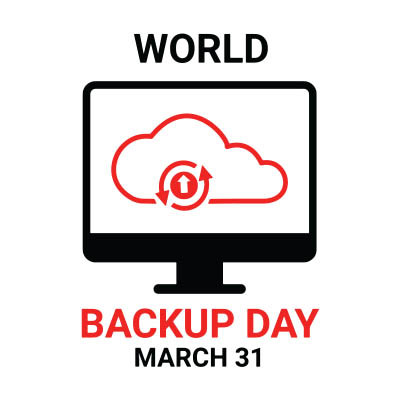Data loss is looming on the horizon, not just for you, but for all unprepared businesses. Are you confident in your ability to recover from a potential data loss incident? Like any IT challenge and risk, it helps to know what you’re up against, so today, we’re covering three of the most common data loss scenarios so you can be prepared for them well in advance.
PC PLACE Blog
Do you know what goes into a successful data backup strategy? If not, know that your business depends on these contingencies to confidently face the challenges of today’s business world. Today, we’re breaking down the essentials of a sound backup strategy—and trust us when we say it’s more complicated than you think.
Today is World Backup Day, an annual reminder that losing your data is just one accidental delete, cyberattack, or spilled drink away. The idea is simple: back up your files before disaster strikes. Because trust me, nothing ruins your day faster than realizing all your work, memories, and important files have vanished.
Imagine waking up one day to find your phone wiped clean with no contacts, no photos, and no messages. Now, picture this happening to an entire business, where all their files, data, and systems are gone. Scary, right? That’s why businesses need a Disaster Recovery (DR) system. It helps them bounce back when things go wrong. Here’s how to build one.
We have frequently espoused the benefits of data backups, referring to how critical they are should your business experience a disaster at any scale. However, there is always the concern that your backups could also be altered negatively. This is one reason that immutable backups exist.
Let’s take a few moments to examine the concept of an immutable backup and its benefits.
It’s no secret that things are more expensive nowadays, making it important that businesses have access to the technology needed to generate revenue. Without this access, a business suffers downtime and all the challenges it brings… not something you want to do.
Let’s consider why downtime happens, the scale of its costs, and what can be done to avoid it.
Every organization deals with operational problems in one manner or another. There are dozens of situations that can cause downtime, and having a comprehensive data backup plan can alleviate many of them. This month’s newsletter discusses business continuity and how data backup is a critical piece of that process.
Nowadays, businesses need to be prepared for almost every circumstance. You may have heard the term “BDR” used to describe a method of attaining this level of preparation. We wanted to discuss this term in more depth, covering what it refers to and what you need to do to protect your business should BDR be right for you.
Spoiler alert: it very much is.
How often do you think about your data backup system? If you’re like most businesses, it’s something that you will likely set up, then quickly forget about, provided you haven’t had to use it. Still, having one is essential to any modern business, and building it with clear outcomes and metrics in mind will help you make your data backup system more effective for the moments when you’re glad you have it.
It’s easy to look at a power strip and a surge protector and question if there’s anything that actually makes them different. After all, they both give you extra plugs, right?
Yes, but there’s more to it than just that. Let’s review some of the important differences between the two that make one a far better choice for your business’ power delivery needs.
It’s an unfortunate fact that all businesses will inherently face some threats during their operations. That’s inescapable. From cyberattacks to natural disasters to good, old-fashioned accidents, you’re liable to face no small risk. This risk makes a process known as risk mitigation so critical for all businesses to undergo with some regularity.
Let’s review a few aspects of creating and maintaining a dependable risk mitigation strategy.
In an era where businesses rely heavily on data and technology, the need for comprehensive disaster recovery solutions has never been more critical. The stakes are high when it comes to safeguarding your company's digital assets and ensuring business continuity in the face of unforeseen disasters. This is where Disaster Recovery as a Service (DRaaS) comes into play.
With technology serving such an indispensable role in modern business the looming threat of disaster is one that needs to be considered. With so many consequences on the line, it’s important that your business is prepared to deal with these disasters effectively and efficiently. Let’s run through some tips for properly preparing for your potential disaster recovery needs.
For those of you that read our blog often, you know we often mention how backing up your business information systems is a crucial part of protecting your organization's IT infrastructure. One of the best rules of thumb when considering your data backup is what is called the 3-2-1 rule. Let’s go through what the 3-2-1 rule is and why it works to protect your business’ digital assets.
It is officially one week until World Backup Day—the global occasion intended to raise awareness about the importance of backups and the proper maintenance and management of them. While we are in full support of this initiative, we also want to make something clear: data backup shouldn’t be an annual consideration, it needs to be a priority each and every day.
If you are a frequent reader of this blog, you know that we rev the throttle on data backup a lot. This is because it can quite literally save your business and for something that valuable, it doesn’t come with a lot of cost. Unfortunately, a lot of businesses don’t always find the expense worth it. In the minds of many decision-makers, what are the chances that your business is hit with a situation that would necessitate a full system restore?



















